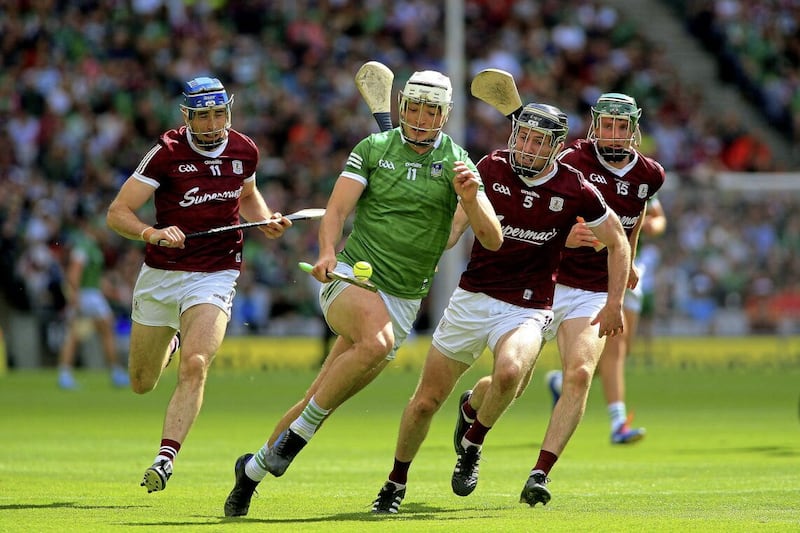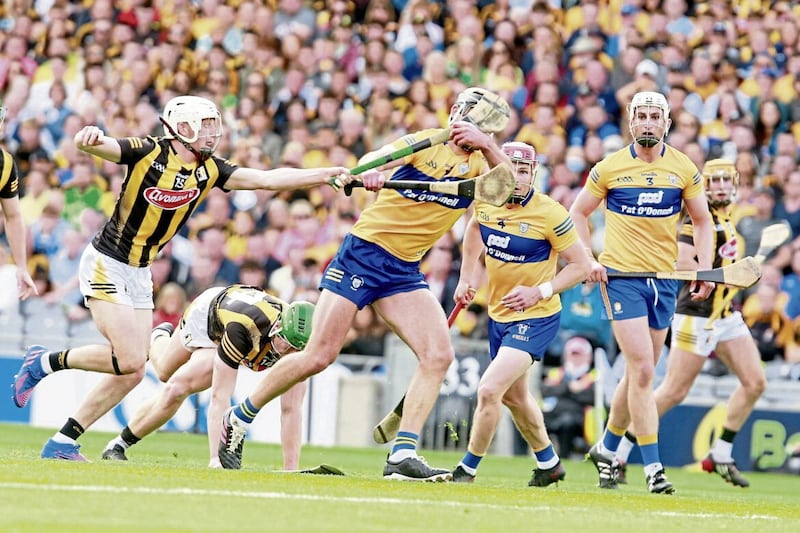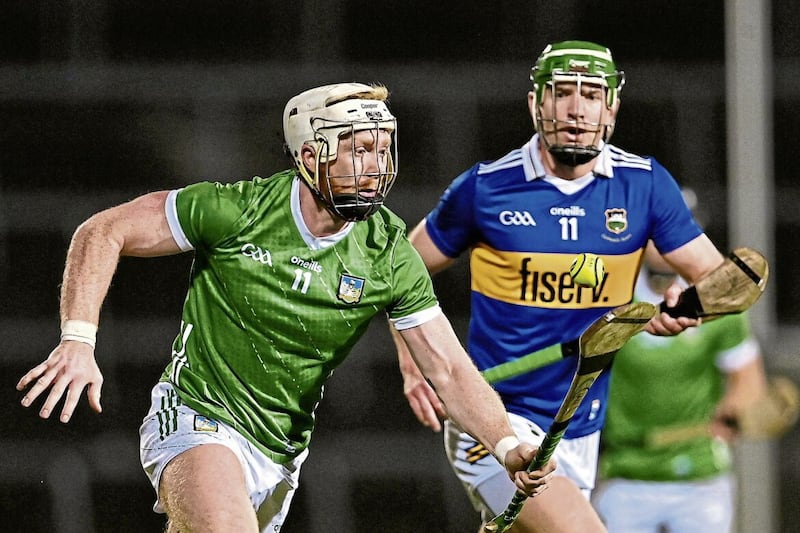In the modern history of All-Ireland finals, Kilkenny’s performance in 2008 and Limerick’s display in the 2021 decider are held up as paragons of excellence and brilliance, the perfect example of reaching the highest standard imaginable on the biggest day of all.
Both games were over before half-time because of such staggering shooting numbers.
In 2008, Kilkenny didn’t have a wide until additional time of that half, by which stage they had scored 2-15 from 19 shots; Limerick hit five wides in the first half in 2021 but they still managed to accumulate a colossal 3-17, which would have won 41 of the previous 60 All-Ireland finals.
Limerick’s total of 0-21 in the second half on Sunday would only have won 20 of the last 60 finals but it was still the most scores a team has recorded in one half of an
All-Ireland decider.
If anything, it was the most impressive half of hurling played in an All-Ireland final.
Arguably, after Paddy Deegan’s goal put Kilkenny five points ahead, this Limerick team played their best hurling ever over the following 33 minutes.
The display was a perfect amalgam of everything brilliant about this team that, when all the elements are fused together, Limerick are an irresistible force, a machine with the capacity to grind teams into the ground with their physical power and sheer force of will.
After having just two shots from play in the first quarter, and just eight in the first half, Limerick had 20 shots from play after the break. Their conversion rate in the second half was a staggering 81 per cent, on a day that wasn’t easy for shooting.
Limerick’s technical and tactical proficiency governs their consistent brilliance but it is still framed around those central planks of physicality, athleticism and explosiveness.
Yet having those qualities facilitates their expression. That raw power holds a mirror to their skill and class.
No other team is able to execute the skills, especially their short passing game, under such extreme heat and hardship better than Limerick.
They have shooters all over the field, who can score from any distance, from any angle; Limerick had 12 different scorers from play on Sunday.
They have an incredible ability to just overpower and overwhelm teams in a short period of time.
Similar to the Galway game, Limerick looked vulnerable in the first half an hour, before hitting the reset button and pulverising Kilkenny in the same way that they obliterated Galway, beating both teams by the same margin of nine points.
In a couple of player interviews afterwards, the words ‘reference points’ were mentioned to reaffirm why there was no need for any panic at half-time.
Kilkenny had hit Limerick with everything they had and were only three points ahead. Limerick still had the breeze to come.
Why would there be any need for panic? Limerick had been in far worse positions before and found a way out.
When they trailed Tipperary by 10 points at half-time in the 2021 Munster final, on the hottest day of the summer, the dressing room was still cold and calm. Serene.
There was no need for any panic, for anxious thoughts or frantic minds. The players knew what needed to be done to put it right.
“One point at a time,” said Pat Ryan, a substitute that day, to the group.
“It’s like chopping a tree. Just keep chopping.”
Just seven minutes into the second half, Limerick had effectively felled the Tipperary oak. Limerick outscored their opponents by 1-10 to 0-1 in the third quarter.
By the time Kyle Hayes scored his iconic goal at the outset of the fourth quarter, Tipp had already been fried to a cinder. Wiped out.
The ferocity of the inferno deepened the Limerick mystique. Sunday’s performance enhanced it but there has never been any mystery for the players. It is just normal business. Process-driven.
Limerick have always had the tools and the personality to reset better than anyone but those demands were stress-tested to the limit this season, especially with injuries to Seán Finn, Cian Lynch and Declan Hannon.
Limerick were not hitting their normal metrics, especially in Munster. The 1-18 they hit against Waterford was the lowest score by a winning team in the whole Championship.
They lost to Clare. Defeat to Tipperary in round three could have eliminated them from the Championship with one round still to play. They drew that day. They won their next two games by one point. Everything Limerick have built, everything they stand for is controlled and deliberate, designed to protect against chaos and disruption.
Once they survived the bear pit of Munster and had a four-week break before the All-Ireland semi-final, they took off.
It’s impossible to make comparisons between teams but winning four-in-a-row now like Cork (1941-’44) and Kilkenny (2006-’09) is always bound to stir up debate.
They were incredible achievements but one of the biggest differences with Limerick’s crusade is the volume of games; Kilkenny played four games in 2009 to win the
All-Ireland; Limerick had to play four extremely tough games this summer just to reach the Munster final.
Cork played 14 games to win their four-in-a-row (excluding the 1941
re-fixture against Tipperary). Sunday was Limerick’s 14th game in the last two seasons.
During Kilkenny’s four-in-a-row, they played 18 games. Sunday was Limerick’s 23rd game along the same route.
During Kilkenny’s march, they won their eight games in Leinster by an aggregate margin of 98 points.
Along with the draw against Tipp, the three games Limerick won in Munster this year was by a combined total of 0-4.
As Kilkenny laid waste to all before them in Leinster, Limerick never had that luxury. In those 23 games, they played Clare and Waterford on five occasions, Tipperary and Cork four times, Galway on three occasions and Kilkenny twice. Serious.
In an increasingly professional culture and climate, with more challengers and realistic contenders, with a much more demanding programme of matches than in the past, with less time for recovery than ever before, Limerick have continued to power forward.
This year presented them with more challenges than ever before but being able to override those setbacks merely reaffirmed Limerick’s greatness.
And last Sunday’s display emphatically confirmed it.







